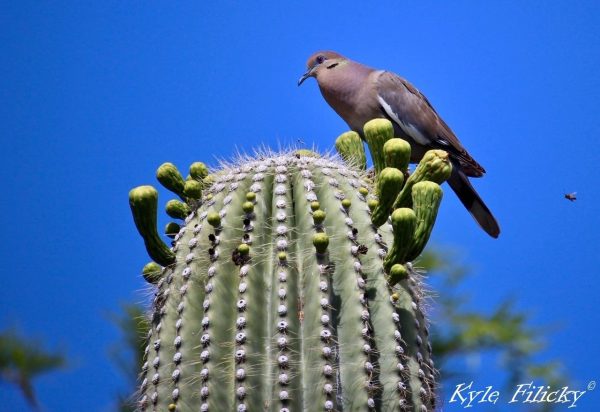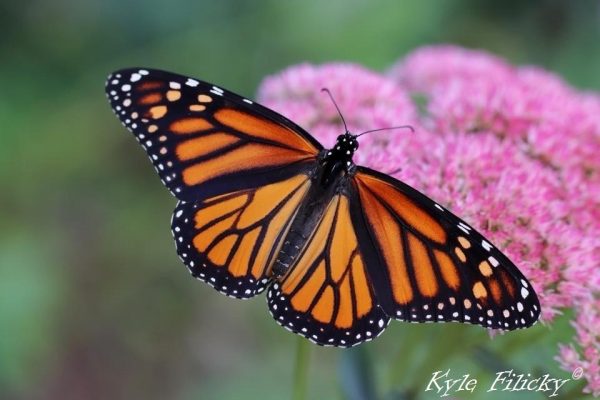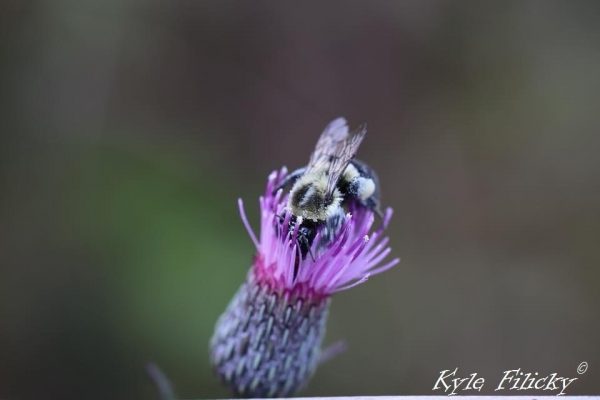Did you know that every third bite of food you eat came from a pollinator? Along with sustaining our farm foods, it also provides ecosystem services by capturing carbon and keeping our groundwater clean. When you step outside and take that deep breath of fresh air, just remember to thank pollinators! Pollen is collected on a male flower’s anthers, which are the terminal portions of the stamen. This pollen is collected by a vector (pollinators) and is received by the stigma, the sticky terminal portion of a female flower. Let’s step into the world of pollinators by taking a look a handful of them below.
White-Winged Dove (Zenaida asiatica)

“Just like the white-winged dove sings a song / Sounds like she’s singing…” This desert-dwelling pollinator synchronizes its migration from Mexico (its wintering home) into the Sonoran Desert (where it breeds) with the reproductive cycle of saguaro cactus (Carnegiea gigantean), which is when the cactus is flowering. This saguaro specialist solely depends on the cacti for nutrients, water, and nesting habitat. In this symbiotic relationship, the dove acquires a place to nest and gather nutrients for herself and young. The saguaro benefits from pollination and seed dispersal.
Monarch Butterfly (Dauaus plexippus)

Monarch butterflies are small but mighty! This unique pollinator migrates over 3,000 miles each year to find breeding grounds. In fact, monarchs only lay their eggs on milkweed (Asclepias syriaca). Monarchs choose milkweed as their host plant because it provides monarch caterpillars with all the nutrients needed to thrive. However, milkweed populations are slowly declining due to development and herbicide application. The primary reason for milkweed decline is due to is cardenolides (glucosidic substances) in its milky sap. Since monarchs caterpillars munch on so much milkweed, they can be considered poisonous. You are what you eat!
Common Eastern Bumblebee (Bombus impatiens)

Of course, the bumblebee is one of the most common pollinators. Bumblebees can be seen emerging from their underground nests to begin gathering nectar for their hive. To do this, they gather the nectar by using a proboscis (tongue) to reach into the floral cavities. With their large bodies and a wing beat of over 130 times per second, they are easily considered the most effective pollinator! To gather pollen, bumblebees vibrate their wings—that’s the buzzing sound you hear—in order to shake the pollen loose. The pollen then sticks to a bumblebee and gets distributed to other flowers that are visited by the bumblebee. Each time a bumblebee visits a flower, it leaves behind a scent mark. By doing this, bees from its hive know that this flower’s pollen has been collected.
How can you help pollinators?
The most important way you can help pollinators is by creating habitat for pollinators. A great way to begin is starting your own butterfly garden with native plants to your region. In addition, you can become a citizen scientist and collect data on different pollinator species during breeding seasons through pollinator initiatives. Let’s “bee” friendly to these pollinators to keep them buzzing around!
For More Information
- Forest Service Pollinators
- Pollinator Partnership
- USFWS Pollinators
- Monarch Way-station
- Ohio Division of Wildlife: Common Bees and Wasps of Ohio Field Guide
- Ohio Division of Wildlife: Butterflies and Skippers of Ohio Field Guide
Contributing Authors: Kyle Filicky (kfilicky@cecinc.com) and Alex Colosimo.

Post a Comment